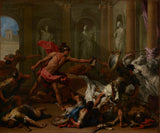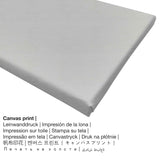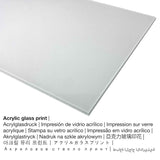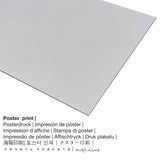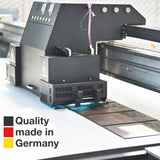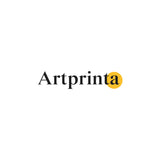Sebastiano Ricci, 1710 - Perseus Confronting Phineus with the Head of Medusa - fine art print
Tax included. Shipping calculated at checkout.
Summary of the art replica of the painting "Perseus Confronting Phineus with the Head of Medusa"
This piece of art Perseus Confronting Phineus with the Head of Medusa was made by the baroque painter Sebastiano Ricci in 1710. Nowadays, the artwork is included in the The J. Paul Getty Museum's art collection located in Los Angeles, California, United States of America. With courtesy of - The J. Paul Getty Museum (licensed - public domain).The creditline of the artwork is: . Moreover, alignment is landscape and has a side ratio of 1.2 : 1, meaning that the length is 20% longer than the width. The painter Sebastiano Ricci was a European artist, whose art style can be classified as Baroque. The Italian artist lived for 75 years - born in the year 1659 in Belluno, Belluno province, Veneto, Italy and deceased in 1734.
Additional artwork information from The J. Paul Getty Museum website (© Copyright - by The J. Paul Getty Museum - www.getty.edu)
In Greek mythology, the hero Perseus was famous for killing Medusa, the snake-haired Gorgon whose grotesque appearance turned men to stone. This painting, however, shows a later episode from the hero's life. At Perseus's and Andromeda's wedding, their nuptials were interrupted by a mob led by Phineus, a disappointed suitor. After a fierce battle, Perseus finally triumphed by brandishing the head of Medusa and turning his opponents into stone.
Sebastiano Ricci depicted the fight as a forceful, vigorous battle. In the center, Perseus lunges forward, his muscles taut as he shoves the head of Medusa at Phineus and his men. One man holds up a shield, trying to reflect the horrendous image and almost losing his balance. Behind him, soldiers already turned to stone are frozen in mid-attack. All around, other men have fallen and are dead or dying. Ricci used strong diagonals and active poses to suggest energetic movement.
Piece of art table
| Work of art title: | "Perseus Confronting Phineus with the Head of Medusa" |
| Artwork classification: | painting |
| Broad category: | classic art |
| Century: | 18th century |
| Year of creation: | 1710 |
| Approximate age of artwork: | around 310 years |
| Exhibited in: | The J. Paul Getty Museum |
| Place of the museum: | Los Angeles, California, United States of America |
| Web URL: | The J. Paul Getty Museum |
| License type of artwork: | public domain |
| Courtesy of: | The J. Paul Getty Museum |
The painter
| Artist: | Sebastiano Ricci |
| Also known as: | Bastian Ricci, S. Ricchi, Sebastian Ritcher, S. Ricci, Sebn. Ricci, Sebastiano Rizzi, Sab. Ricci, Sebast. Ricci, sebastino ricci, Seb. Ritchi, Seb. Riccio, Sebastian Ricci. -- Ven., Seb. Rizzi, Sebastian Rijtzi, Rissi, Sebastian Ricci, Sebastian Richi, Bastian Rizzi, B. Ricci, Sib. Ricci, Richter Sebastian, Bastiano Ricci, Sebastian Picce, Sabastian Ricci, Rici Sebastiano, Seb Ricci, Sébastien Ricci, Sabastian Rici, Ricci Sebastiano, ricci sebastian, Ricci S., Seb. Ricchi, Sebastiano Ricchi, Sebas. Ricci, Sebastien Rici, Ricci Seb., S Ricci, Sebr. Ricci, Rizzi Sebastiano, Seb. Ricci, Rizzo Sebastiano, Ricci B., S. Bastein Ricci, Ricci Sebastiane, Sebastien Rixi, Sebastiano Ricci, Seb. Recci, Sabastian Ricie, Ricci, Seb: Ricci, Rizzi, ricci s., Ricchi, Ricci Sebast., Ricchi Sebastiano, Sebastian Ritzi, Sebastin Ricci, Sebastian Rizzi, S Ricci |
| Artist gender: | male |
| Nationality of artist: | Italian |
| Professions: | painter |
| Country: | Italy |
| Classification: | old master |
| Art styles: | Baroque |
| Died aged: | 75 years |
| Year of birth: | 1659 |
| Hometown: | Belluno, Belluno province, Veneto, Italy |
| Year of death: | 1734 |
| Place of death: | Venice, Venezia province, Veneto, Italy |
Select the material you would like to hang up on your walls
In the dropdown menu next to the product offering you can pick the size and materialaccording to your personal preferences. You can choose among the following product customization options:
- Acrylic glass print: The print on acrylic glass, often labelled as a print on plexiglass, makes an original work of art into beautiful home decoration. Beyond that, the acrylic fine art print makes a viable alternative to canvas and aluminidum dibond prints. The artwork is being made thanks to the help of modern UV printing machines. The effect of this are intense, deep colors. With an acrylic glass art print contrasts as well as smaller color details become exposed because of the granular tonal gradation of the picture. The real glass coating protects your selected art print against light and heat for many years.
- The canvas print: The canvas direct print is a printed canvas mounted on a wooden frame. Canvas prints are relatively low in weight, meaning that it is easy to hang your Canvas print without additional wall-mounts. A canvas print is suited for all types of walls.
- Aluminium print (aluminium dibond): Aluminium Dibond prints are metal prints with an outstanding effect of depth. Its non-reflective surface structure make a contemporary look. For the Direct Print On Aluminum Dibond, we print the selected artpiece onto the aluminium composite surface. The bright and white parts of the original work of art shine with a silky gloss, however without glow. Colors are luminous and bright, the fine details of the print are very clear, and the print has a a matte look you can literally feel. The print on Aluminum Dibond is one of the most popular entry-level products and is an extremely stylish way to display art reproductions, as it draws attention on the image.
- The poster print (canvas material): The poster is a UV printed canvas paper with a nice finish on the surface, that resembles the actual artwork. Please note, that depending on the absolute size of the poster we add a white margin of something between 2-6cm round about the print, which facilitates the framing.
About the article
| Article type: | wall art |
| Reproduction: | digital reproduction |
| Manufaturing technique: | UV direct print |
| Production: | made in Germany |
| Stock type: | on demand production |
| Intended product use: | wall art, wall décor |
| Image orientation: | landscape format |
| Side ratio: | 1.2 : 1 |
| Side ratio implication: | the length is 20% longer than the width |
| Available variants: | acrylic glass print (with real glass coating), canvas print, poster print (canvas paper), metal print (aluminium dibond) |
| Canvas print (canvas on stretcher frame) size variants: | 60x50cm - 24x20", 120x100cm - 47x39", 180x150cm - 71x59" |
| Acrylic glass print (with real glass coating) variants: | 60x50cm - 24x20", 120x100cm - 47x39", 180x150cm - 71x59" |
| Poster print (canvas paper) size options: | 60x50cm - 24x20", 120x100cm - 47x39" |
| Aluminium print options: | 60x50cm - 24x20", 120x100cm - 47x39" |
| Picture frame: | no frame |
Disclaimer: We try everythig possible in order to describe our products as accurate as possible and to display them visually in our shop. Still, some pigments of the print products and the printing may differ somehwat from the representation on the screen. Depending on the settings of your screen and the condition of the surface, color pigments may not be printed as exactly as the digital version depicted here. In view of the fact that all the art prints are printed and processed manually, there might as well be minor deviations in the motif's size and exact position.
This text is protected by copyright © | www.artprinta.com (Artprinta)

